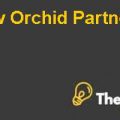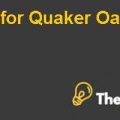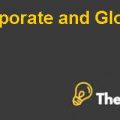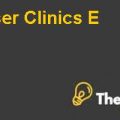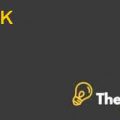Question 2
To what extent does the proposed financial structure affect the viability of the deal? Would you accept the staple-on financing provided by Goldman Sachs?
The managers of Berkshire Partners believed that the capital structure of the company should be comprised of about at least 25% of the equity portion so that the desired results could be achieved and a true commitment could be shown to the lending base. A range of factors were considered by the management of the company for deciding their financing structure and these factors included the financing costs, the impact upon the credit rating of the company and the most optimal amount of leverage which should be maintained for a business of this type.
According to Ascione, there are a lot of factors that need to be considered before a financing structure is proposed for a deal, for instance, the purchase price of the transaction. Therefore, the proposed financial structure for a particular deal affects its viability to a higher extent. Regarding the deal to purchase Carter, Berkshire Partners were being offered a staple on financing structure by Goldman Sachs. The management of the company felt that this financing clause in the bidding process limited the ability of the company to get an edge in the bidding process as more and more attractive financing deals would be coming to the table.
Therefore, the staple on financing being provided by Goldman Sachs as shown in exhibit 6 was a problem for Berkshire Partners. However, after raising the financing from the sources as shown in exhibit 6, if the debt and the equity proportion in the capital structure are near to 75% and 25% respectively then it should be accepted by the company, otherwise, the company needs to finance the bid from other sources. Secondly, a decision regarding the staple in financing could also be made based upon the forecasted enterprise value for Carter on that financing mix as proposed by Goldman Sachs.
Question 3
Berkshire must make a final bid for Carter’s including a proposed capital structure. Perform a detailed analysis of the value of Carter’s and make a recommendation on the value of your final bid and required equity commitment.
The valuation for Carter has been performed based upon the adjusted present value method. Since the financing structure that is being proposed by Goldman Sachs has a significant proportion of debt, therefore, the adjusted present value method has been used to account for the valuation of the debt and the equity part separately. The debt financing is comprised of three debt instruments, which are revolver debt, term loan B and the senior subordinated notes. Based on their respective weights and interest rates, the weighted average cost of debt has been calculated on the basis of which the present value of the total interest tax shield has been calculated.
The tax rate has been assumed to be approximately 40% based upon the average of the historical tax rates. In order to value the un levered free cash flows, first of all the un levered cash flows have been calculated based upon the assumptions of the management projections. The net working capital investment change has been assumed to be in line with the historical rates as a percentage of sales. The terminal growth rate has also been estimated to be 3% using the terminal growth rate formula.
The comparable company’s data has also been used in order to compute their individual asset betas and then the average asset beta has been used in the capital asset pricing model formula in order to calculate the cost of equity for Carter. Based on this, all the un levered cash flows for the 6 years have been discounted. The terminal value has also been calculated using the terminal growth rate at the end of the 6th year which is the exit year for this transaction. Overall, summing up the present value of the un levered free cash flows, the present value of the tax shield and the present value of terminal value, the enterprise value for Carter has been calculated to be $ 710 million.
After deducting the total amount of debt, the equity value would be $ 350 million. This purchase price would require an equity commitment of 49% in the capital structure of Berkshire Partners. This is based upon the stable in financing provided by Goldman Sachs. However, it is not mandatory for Berkshire’s management to use this source of financing and it could also look for alternative sources of finance based on which it could limit to equity portion to 25%........
This is just a sample partical work. Please place the order on the website to get your own originally done case solution.

